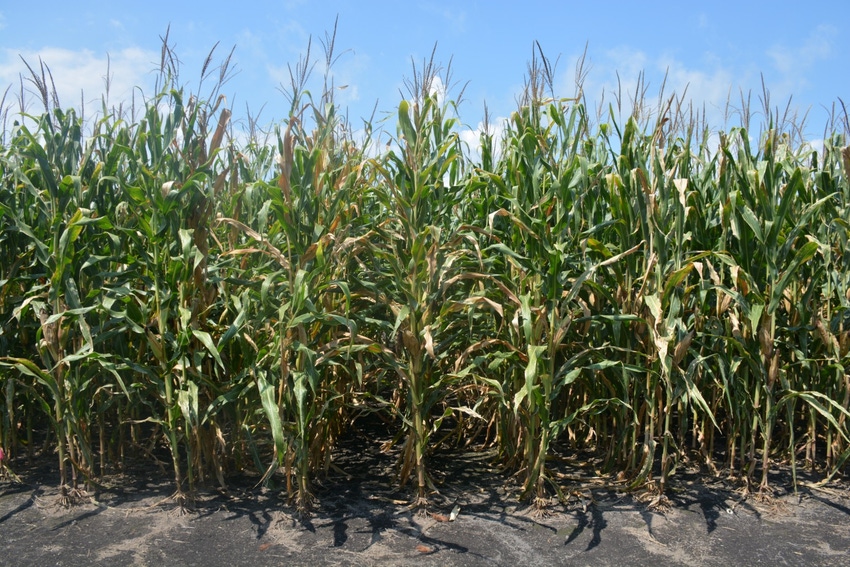
Thanks to a wet May and June this year, Charlie Cahoon received more calls from farmers across the Blacklands of North Carolina complaining about doveweed in their corn.
Cahoon, North Carolina State University Extension weed specialist, explains that doveweed is a summer annual in the dayflower family that prefers poorly drained areas. It is unique because it emerges later than other weeds and is a challenge because glyphosate doesn’t offer good control.
“Right now, doveweed is scattered around the Blacklands, and it is starting to move west,” Cahoon said in a YouTube video from this year’s virtual Blacklands Farm Managers Tour.
Cahoon pointed to research conducted by Alan York at North Carolina State in Hyde County in 1998 examining doveweed control with burndown treatments. The study looked at doveweed control 10 days after treatment and 28 days after treatment.
“If we look at doveweed control 10 days after treatment, we only have 75 percent control by glyphosate and that control drops to just over 50% at 28 days after treatment. Compare that to paraquat or Gramoxone that controlled doveweed 100% 10 days after treatment and 80% 28 days after treatment. If we’re going to go after doveweed burndown, we’re going to have to use a product like paraquat instead of glyphosate,” Cahoon said.
In corn, atrazine did offer 80% control 28 days after treatment while Evik, a cousin to atrazine, when applied with drop nozzles, provided 97% control 28 days after treatment. Liberty offered 70% control 28 days after treatment.
“It’s important to remember that doveweed emerges late in the season so anything we can do to facilitate early canopy closure will help us deal with that late-season doveweed in corn,” Cahoon said.
Start clean
As in controlling all weeds, Cahoon urges farmers to start clean by using paraquat at planting in corn instead of applying glyphosate and to stay clean by applying atrazine post or Evik post directed or with drop nozzles.
“If you have the option to use Liberty, multiple applications of the product will likely do a decent job, although not as good as atrazine or Evik,” Cahoon said.
He does encourage the use of residuals to control doveweed in corn. The Group 15 herbicides such as Dual, Magnum, Outlook, and Warrant do have residual activity against doveweed.
In cotton, Cahoon said it is important to use paraquat to control doveweed instead of glyphosate at planting. Cotton is planted later than corn so there may be some doveweed that has actually emerged at planting.
“We have a Group 15 in the form of Warrant that can be used pre-emergence in cotton so that would be a good option in combination with paraquat for some early season residual control of doveweed. It’s important to stay clean and stay ahead of that doveweed emergence with the post residuals such as Dual, Magnum, Outlook, and Warrant. They have residual activity against doveweed, but they will not control it postemergence, so you have to get it on before that doveweed emerges,” Cahoon said.
Rotate
Cahoon’s first recommendation for farmers who have difficulty with doveweed is to rotate with soybeans.
“First Rate is labeled for soybeans and is very effective for doveweed management so that would be a way to get out ahead of that doveweed population. It’s also important to make sure you control all doveweed before you plant and also after harvest. Because it comes up late in the season, you may not notice you have it until after harvest. If you do have some emerged doveweed after harvest of a crop like corn, it would be important to take it out, so you don’t have as much to deal with the next season,” Cahoon advised.
About the Author(s)
You May Also Like






